A few days ago, I visited Yves Saint Laurent’s former haute couture house. It is located 5 avenue Marceau in the 7th arrondissement de Paris and from 1974 to 2002, YSL’s designs were created here.
This address is also the location of the Pierre Bergé foundation which aims to conserve YSL’S work.
First room:
The first section of the exhibit displays the key pieces of YSL’s style. They are men clothes imagined and rearranged for a feminine clientele. These pieces are a mixture of masculine cuts, comfort and womenly touches of simplicity and elegance.
 Prototype of YSL’S first tuxedo. AW 1966 (wool, silk, cotton)During the 1880s, men wore “tuxedos” when they smoked. Tuxedos were donned with broad silk lapels designed so that the ashes of men’s cigars would slide without leaving any marks. The tuxedo imagined by YSL embodies the emancipated woman who breaks with traditional rules and who makes a shift in the conventions of seduction.
Prototype of YSL’S first tuxedo. AW 1966 (wool, silk, cotton)During the 1880s, men wore “tuxedos” when they smoked. Tuxedos were donned with broad silk lapels designed so that the ashes of men’s cigars would slide without leaving any marks. The tuxedo imagined by YSL embodies the emancipated woman who breaks with traditional rules and who makes a shift in the conventions of seduction.
 Jumpsuit (wool and jersey, Maison Racine). Day outfit. Prototype. AW 1968.The jumpsuit is a functional outfit which epitomizes the social changes of the time. Inspired by the clothing of aviators and parachutists, YSL turns them into feminine outfits in 1968. The jumpsuit becomes a new seduction tool. YSL makes his first jumpsuit sketch and design for Zizi Jeanmaire and her Show in the Olympia theatre.
Jumpsuit (wool and jersey, Maison Racine). Day outfit. Prototype. AW 1968.The jumpsuit is a functional outfit which epitomizes the social changes of the time. Inspired by the clothing of aviators and parachutists, YSL turns them into feminine outfits in 1968. The jumpsuit becomes a new seduction tool. YSL makes his first jumpsuit sketch and design for Zizi Jeanmaire and her Show in the Olympia theatre.
Trench coat (calfskin, Maison Cuvreau). Day outfit. SS 1976. Prototype.
The trench coat is inspired by English officials. It is displayed for the first time in YSL’s AW 1962 collection and is combined with a white night dress.
The trench coat keeps its military style but becomes more feminine. Until 2002, it is made out of several materials, -such as leather, silk, vinyl, knitwear- and patterns as well as embroideries.
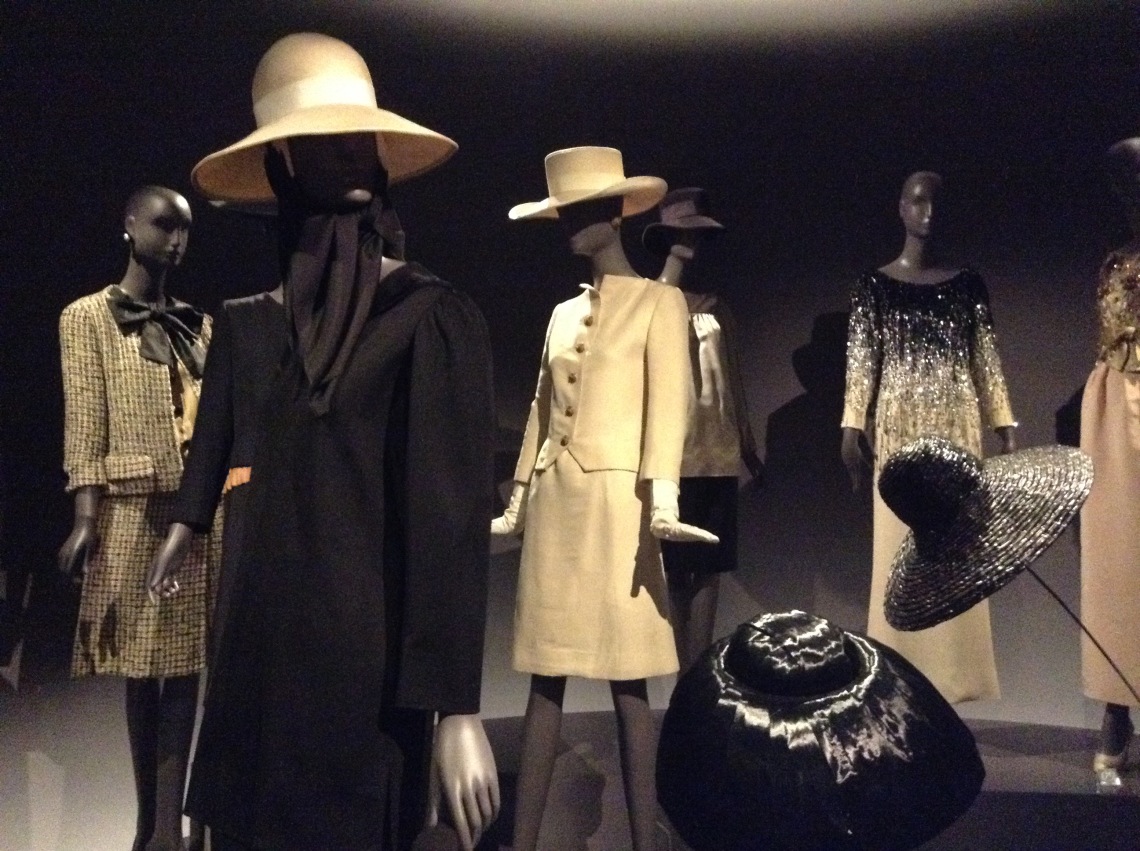 Hats. SS and AW 1962. Prototypes. N°13 and N°15. Both capelines.When YSL starts his first collection in 1962 he decides that all his clothes should be accessorized. Hats play a major role in the outfits and finish-off silhouettes.
Hats. SS and AW 1962. Prototypes. N°13 and N°15. Both capelines.When YSL starts his first collection in 1962 he decides that all his clothes should be accessorized. Hats play a major role in the outfits and finish-off silhouettes.
The “Norman blouse” (silk satin). AW 1962. Prototype. N° 106.
It is the first blouse designed by YSL. This blouse is inspired by pesant shirts but is however made out of silk satin, a precious fabric. Blouses are the key elements of YSL’S wardrobe. They play with transparency, the effects created by the fabric , the patterns and give a floating and comfortable aspect to outfits.
 Second and third dresses: Night dresses AW 1962 client designs. N°110 and N° 82. 2nd dress: crepe dress embroidered with pearls and sequins (Ateliers Georges and Esther). 3rd dress: lace top embroidered with pearls and strass, faille skirt with flower patterns (Atelier Esther).
Second and third dresses: Night dresses AW 1962 client designs. N°110 and N° 82. 2nd dress: crepe dress embroidered with pearls and sequins (Ateliers Georges and Esther). 3rd dress: lace top embroidered with pearls and strass, faille skirt with flower patterns (Atelier Esther).
4rth dress: Posh dress SS 1962. Silk crepe.
5fth dress: Short night dress embroidered with pearls. Silk crepe (Atelier Georges)
It is the first design with the label YSL (N°000001). It was made for Zizi Jeanmaire’s musical in Athambra. It was ordered by a prestigious client called Patricia Lopez-Willshaw. The short cut, the embroidery and the material give dynamic, modern and posh vibes to the outfit.
YSL sketches :
Second room:
YSL collaborated with haute couture houses and skilled craftspeople namely: weavers, dyers, printers, embroiderers, plumassiers, gold and silversmiths. Each house has its own technique, style and specificity. This high quality work was exclusively ordered by YSL. It is mainly the work of ateliers : the ones of Rebé, Mesrine, Lesage and Label for embroideries, Abraham for prints, Brossin de Méré for textiles and embroidered appliqués, Lemarié for the featherwork and Goosens for the jewellery. The textile is chosen according to its drapery effect, and weave structure. This weave structure is composed of interlaced threads that are in harmony with the model’s structure. YSL choses the color and the ground weave: tabby or taffeta, twill or satin. Than patterns are added on the fabric: they can be woven, printed, embroidered or appliqués.
 Night jacket. SS 1990. Atelier Georges. Organza, metallic threads, silk, pailletés (Maison Lesage)
Night jacket. SS 1990. Atelier Georges. Organza, metallic threads, silk, pailletés (Maison Lesage)
Third room:
“My most beautiful trips where the ones in my books, on my couch, in my living room” -Yves Saint Laurent.
The inspiration of the designer comes from his “imaginary” or “still” trips, namely the ones he made thanks to books and works of art. Exotic outfits are on display. They take us to Morocco, Russia, Spain or Asia where he was found of bright colors, shapes, fabrics. This section shows us a panel of dreamed creations.
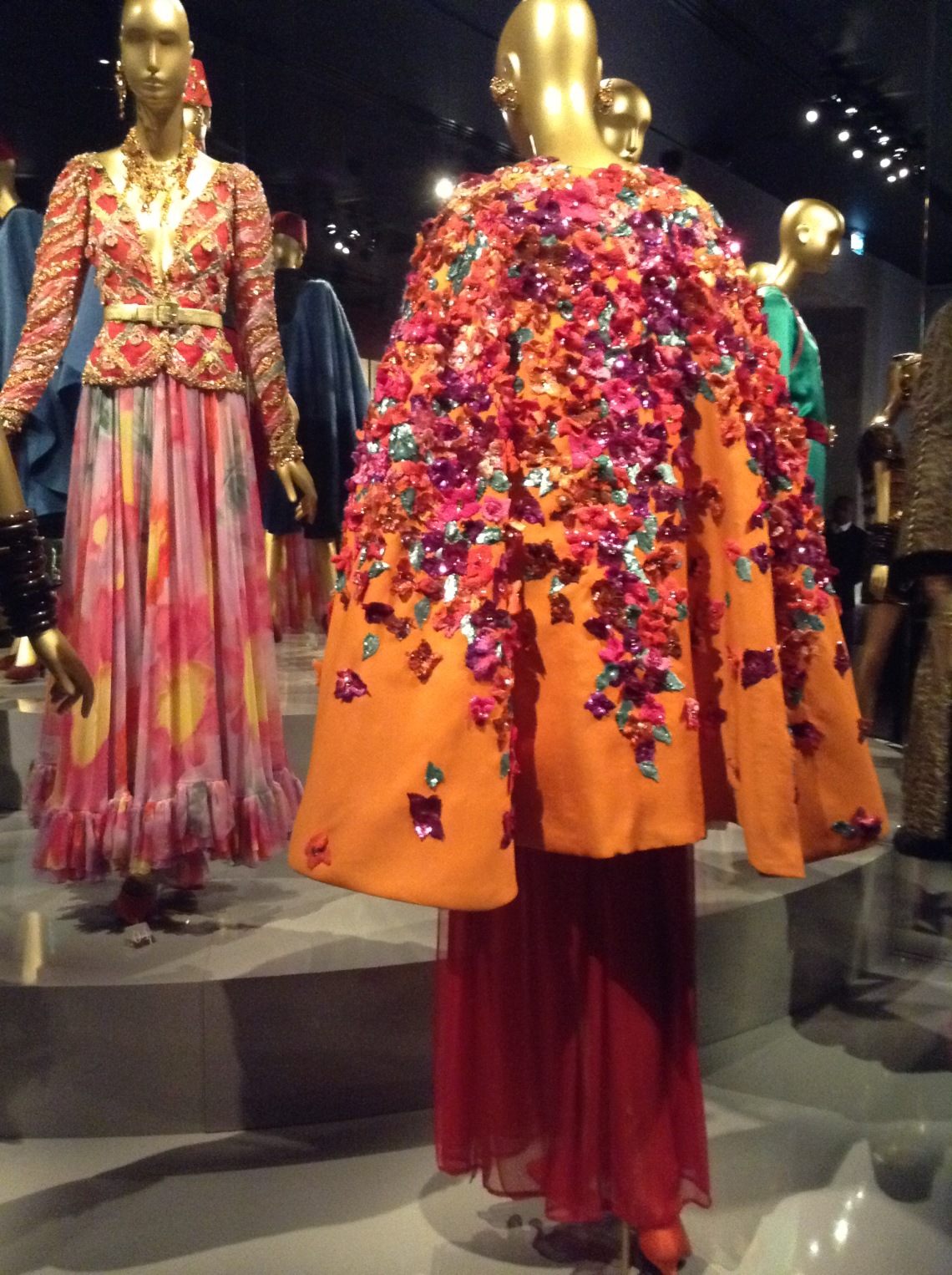 Night cape. SS 1989 (Gazar silk, flower embroideries) and dress made out of silk. These “bougainvilliées” capes evoke flourishing gardens of Morocco where YSL discovers color in 1966. His trip to Morocco influences the colors he chooses mix together: pink and orange, green and blue or red and purple -bright and original color combinations. These capes are meant to be “wearable gardens”. There prominent embroidery embody flower movements.
Night cape. SS 1989 (Gazar silk, flower embroideries) and dress made out of silk. These “bougainvilliées” capes evoke flourishing gardens of Morocco where YSL discovers color in 1966. His trip to Morocco influences the colors he chooses mix together: pink and orange, green and blue or red and purple -bright and original color combinations. These capes are meant to be “wearable gardens”. There prominent embroidery embody flower movements.
PS: this outfit is one of my favorites and I bought a card with this creation at the giftsore and another card with YSL by Andy Warhol as well as a YSL notebook at the giftstore.
Fourth room: jewellery and drawing
 Necklace SS 1983. Metallic choker with glass orange flowers, a strass butterfly and black pearls.
Necklace SS 1983. Metallic choker with glass orange flowers, a strass butterfly and black pearls.
 Pendant. SS 2002. Shells, coral and golden metal.
Pendant. SS 2002. Shells, coral and golden metal.
Fifth room:
The wedding dress is now part of haute couture shows thanks to Jeanne Lanvin and Madeleine Vionet. They make fashion shows special. Couturiers try different shapes and play with the traditional white color that wasn’t adopted until the end of the 19th century.
Wedding dress. SS 1988. Prototype. Atelier Renée. Dress: White tulle, cotton. Silk coiffe.
Inspired by cubist artists, YSL deconstructs shapes and designs 3D creations. The dove and birds are a tribute to Georges Braque and make YSL’S creation extravagant and poetic.
Sixth room:
YSL’s explores the history of fashion through his creations. Antic togas become draped evening gowns. His inspiration comes from the middle ages, Renaissance dresses with precious fabrics, the 17th century dresses of the wealthy women in the royal court and the 18th century ones worn by aristocrats and courtesans. YSL also designs creations that remind us of 19th century dresses composed of crinoline as well as light and simple materials.
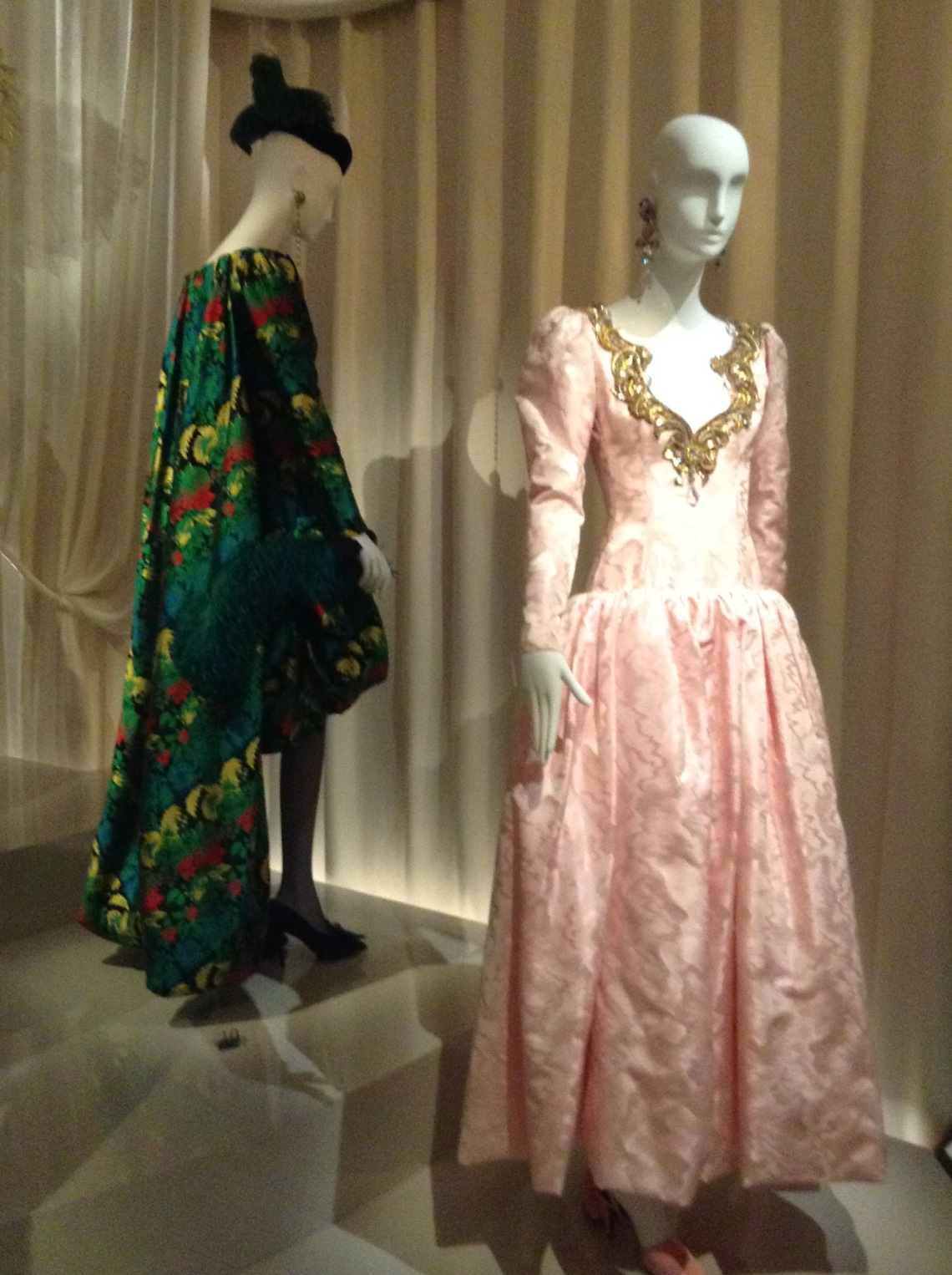 YSL’s designs reflect the modernity of the roaring twenties and of the 1940s.
YSL’s designs reflect the modernity of the roaring twenties and of the 1940s.
 Black night outfit. Silk velvet, pearls. AW 1983. Prototype. Atelier Felipe.YSL decides to use luxurious materials and enveloping shapes to show that the body is free. This exotic creation is inspired by the Orient.Behind: Spanish dress. Tribute to Roland Petit and Christian Bénard. AW 1990. Prototype. Gazar and silk organza, pearl embroidery.
Black night outfit. Silk velvet, pearls. AW 1983. Prototype. Atelier Felipe.YSL decides to use luxurious materials and enveloping shapes to show that the body is free. This exotic creation is inspired by the Orient.Behind: Spanish dress. Tribute to Roland Petit and Christian Bénard. AW 1990. Prototype. Gazar and silk organza, pearl embroidery.
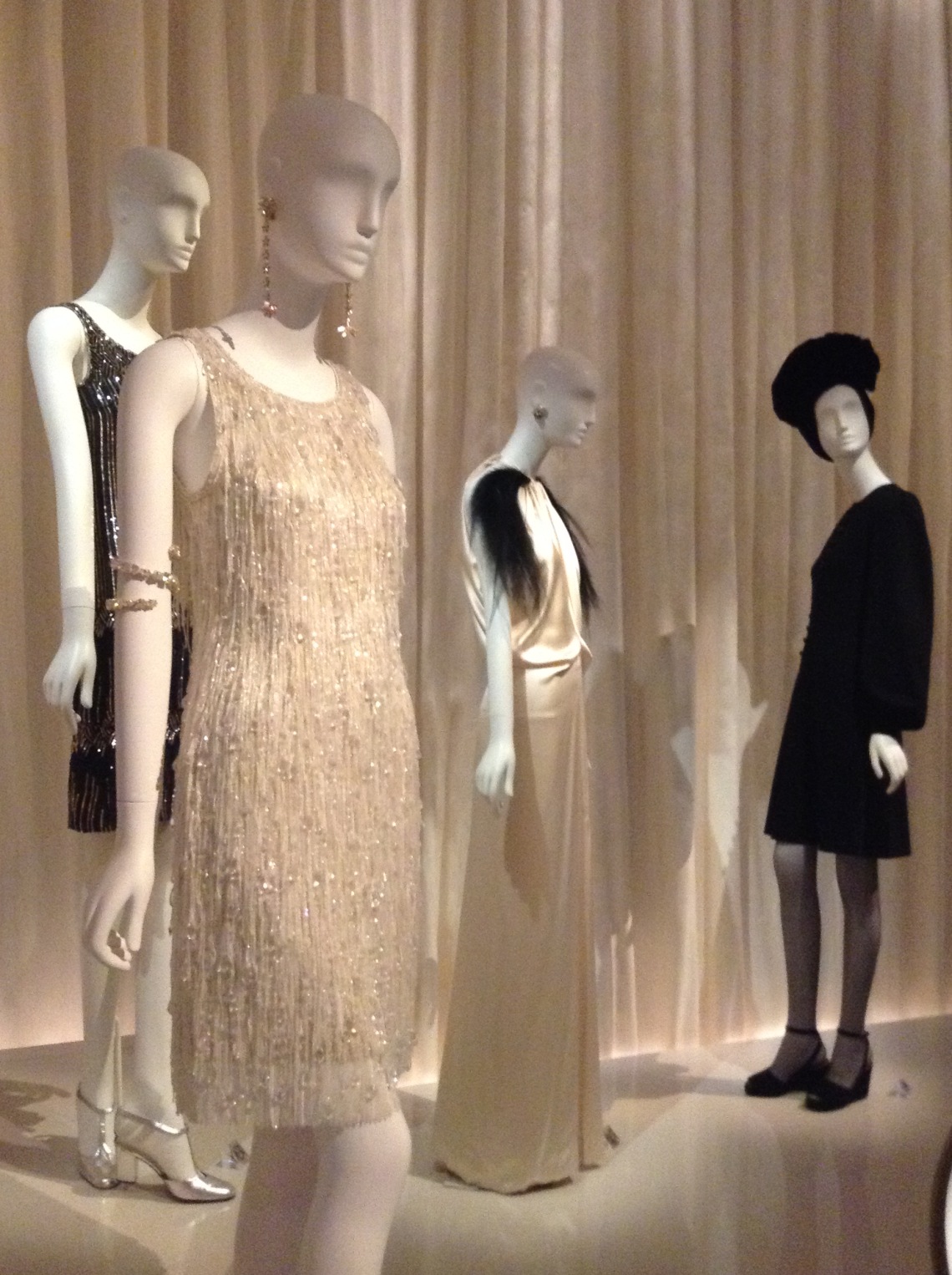 Night dress. SS 1970. Prototype. Silk and pearl embroidery. YSL decides to make the roaring twenties more actual, changing the cut, shape, lenght of the dress, embroidery as well as the use of the materials. This tomboy dress is simple and enables body movements, as there was a craze for dance at the time, especially for Charleston.
Night dress. SS 1970. Prototype. Silk and pearl embroidery. YSL decides to make the roaring twenties more actual, changing the cut, shape, lenght of the dress, embroidery as well as the use of the materials. This tomboy dress is simple and enables body movements, as there was a craze for dance at the time, especially for Charleston.
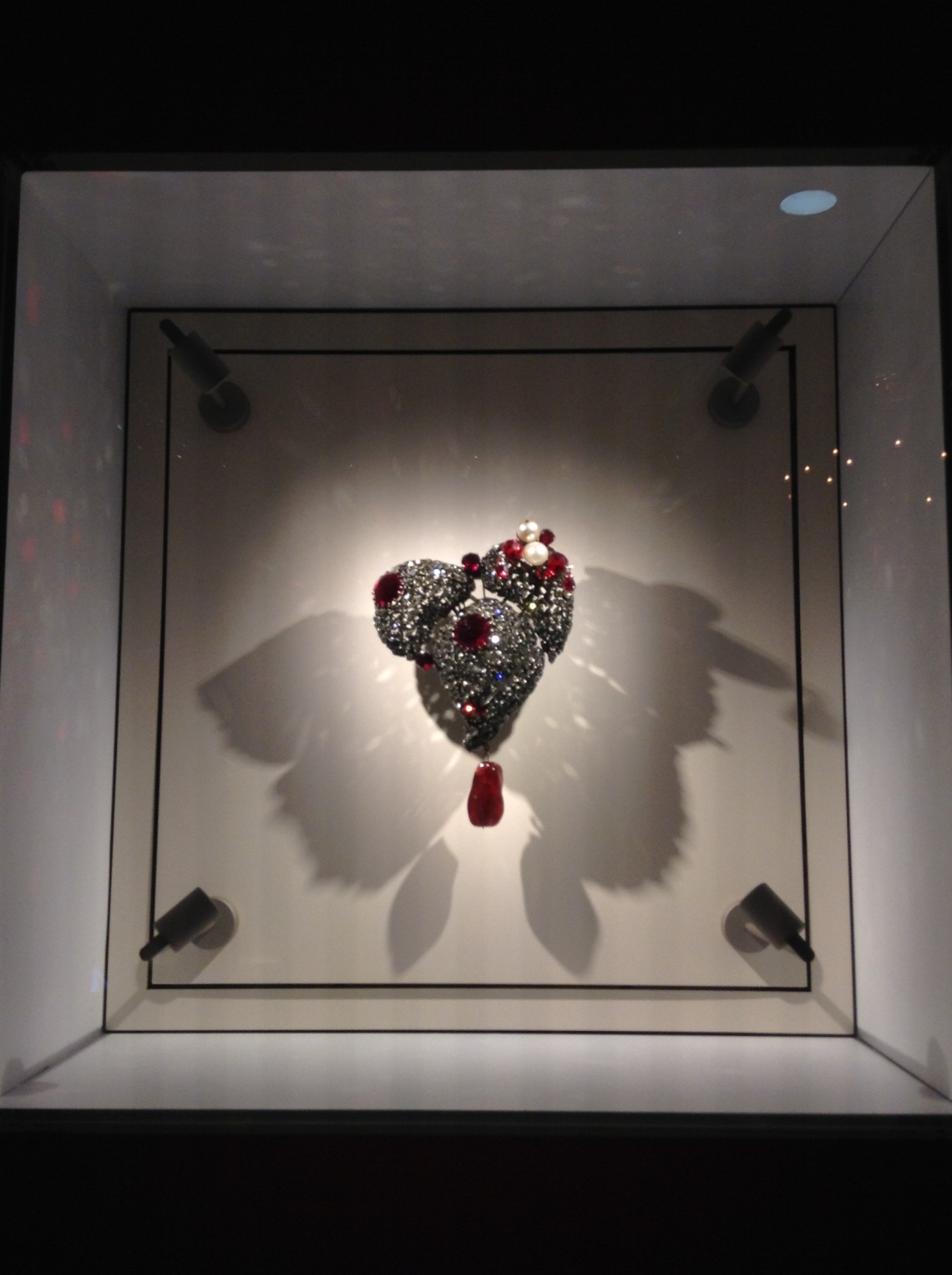 “Heart” necklace. 1979. Red and grey strass, red Cristal, white pearls and red glass. This is an emblematic YSL jewel. It was created in 1962 by the “Maison Scemama” and was reimagined in 1979.
“Heart” necklace. 1979. Red and grey strass, red Cristal, white pearls and red glass. This is an emblematic YSL jewel. It was created in 1962 by the “Maison Scemama” and was reimagined in 1979.
My favorite part of the exhibit: YSL’S studio. I was so moved when I visited this place…
 The view he had from his studio
The view he had from his studio
Seventh room:
 Night jacket “the sunflowers”. Tribute to Vincent Van Gogh. SS 1988. Prototype. Silk organza and perls.
Night jacket “the sunflowers”. Tribute to Vincent Van Gogh. SS 1988. Prototype. Silk organza and perls.
 Short night dress. Tribute to Pablo Picasso. AW 1979. Prototype. Faille, satin, Silk velvet. Knotted belt made with silk satin.
Short night dress. Tribute to Pablo Picasso. AW 1979. Prototype. Faille, satin, Silk velvet. Knotted belt made with silk satin.
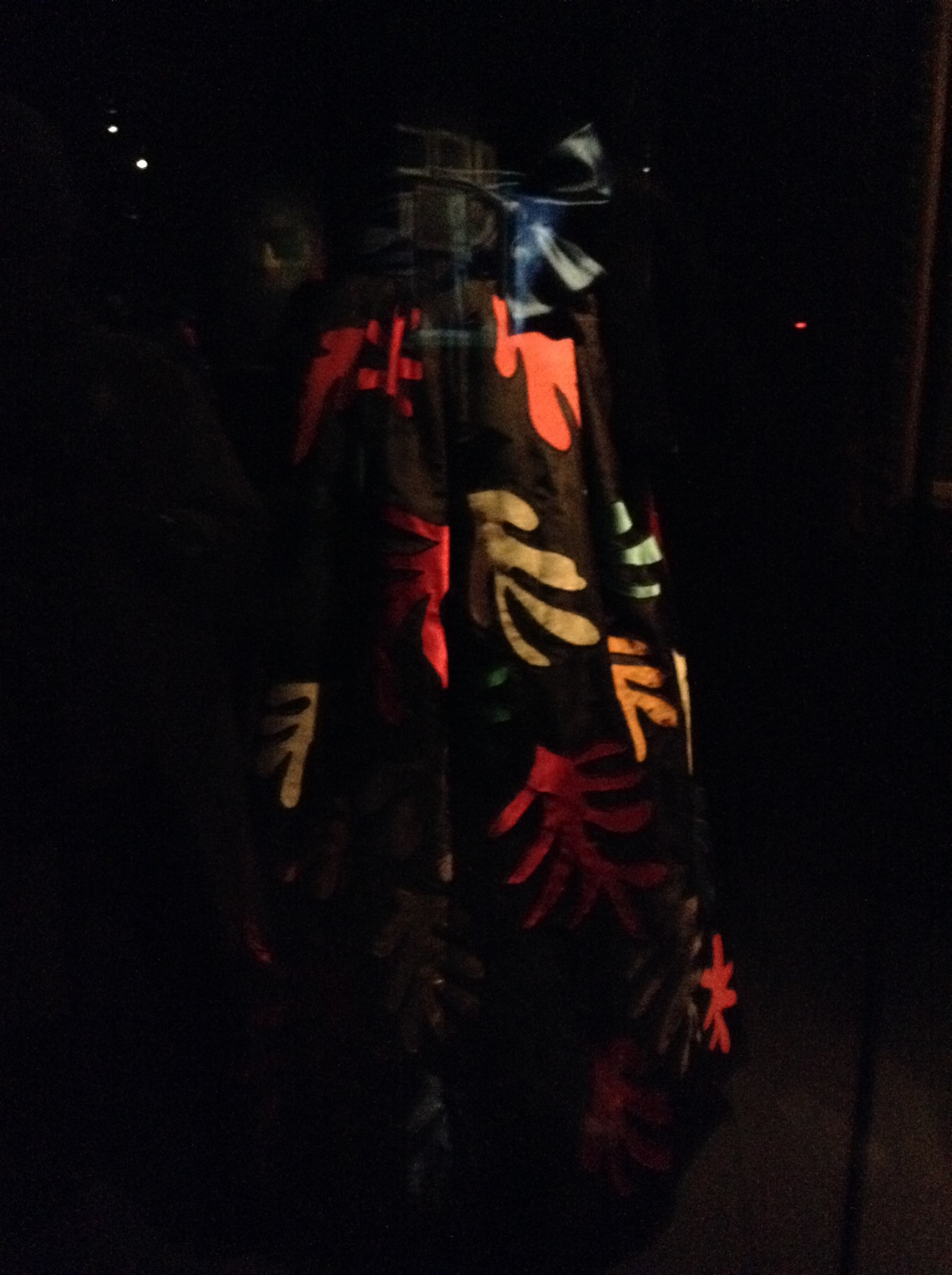 Dress. Tribute to Henri Matisse.
Dress. Tribute to Henri Matisse.
 Cocktail dress. Tribute to Piet Mondrian. AW 1965. Prototype. Jersey and wool.
Cocktail dress. Tribute to Piet Mondrian. AW 1965. Prototype. Jersey and wool.
What is your favorite YSL outfit? Have you visited the museum yet? If not, you should definitely.
XO
LFB

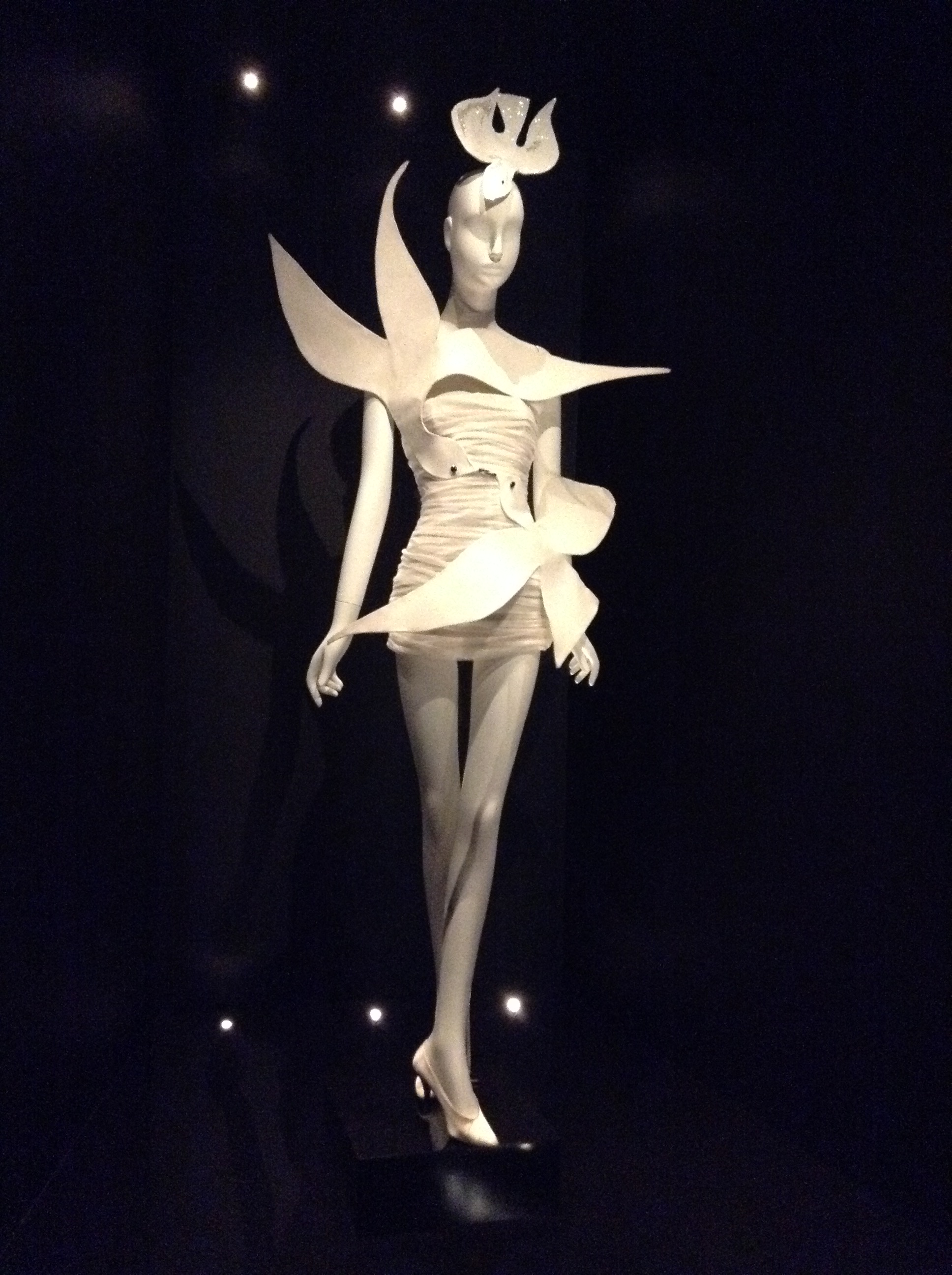


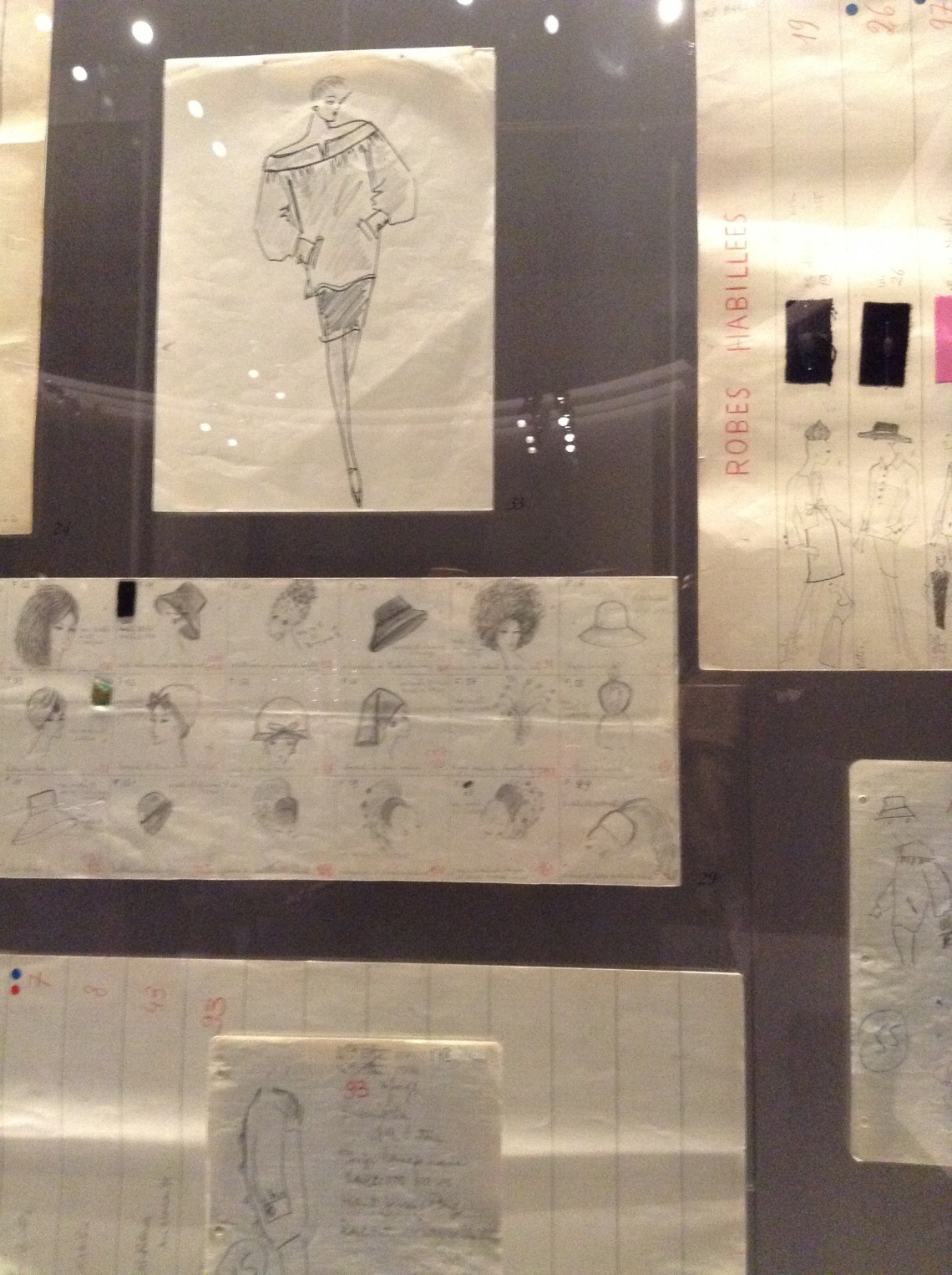

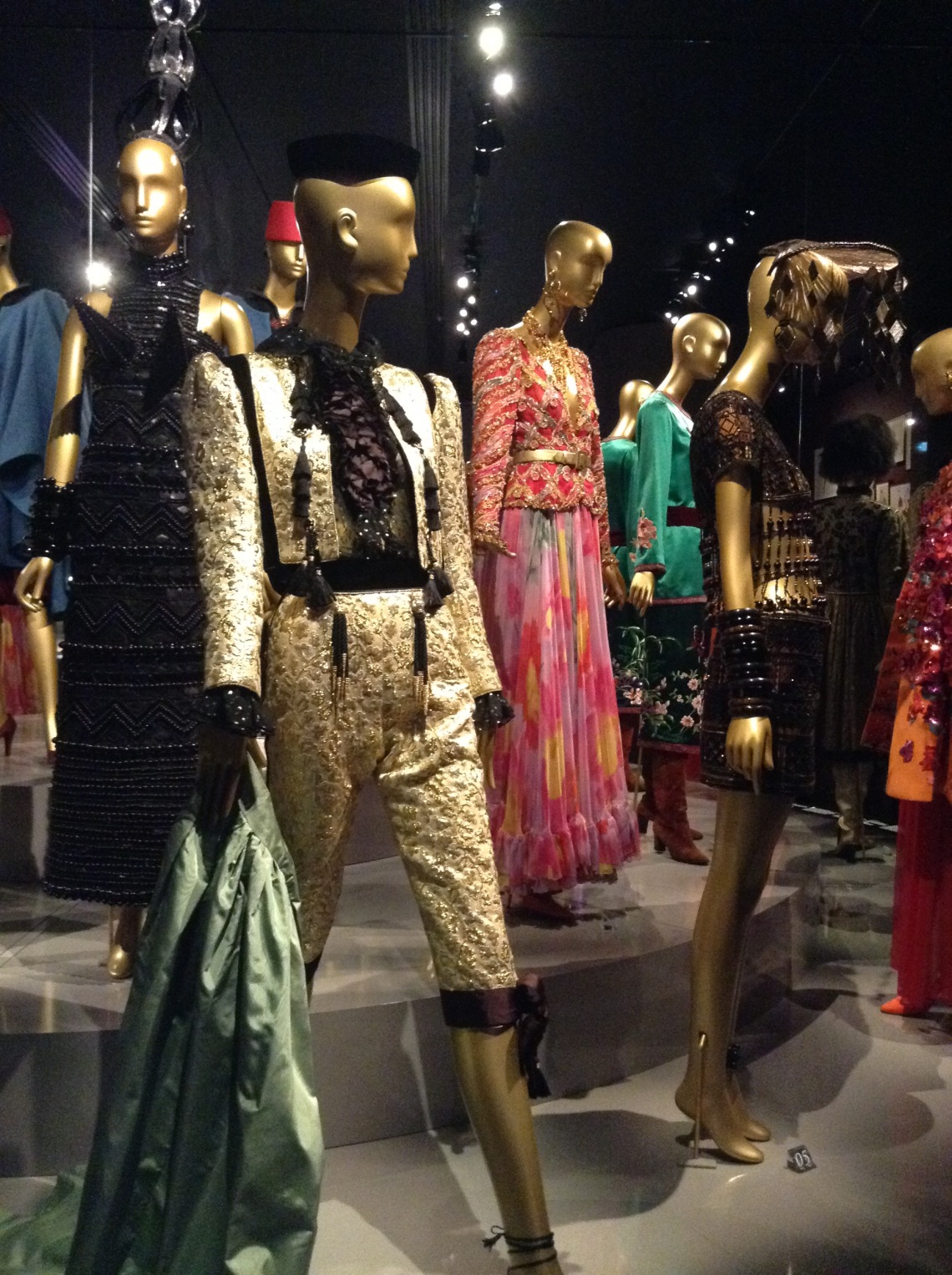
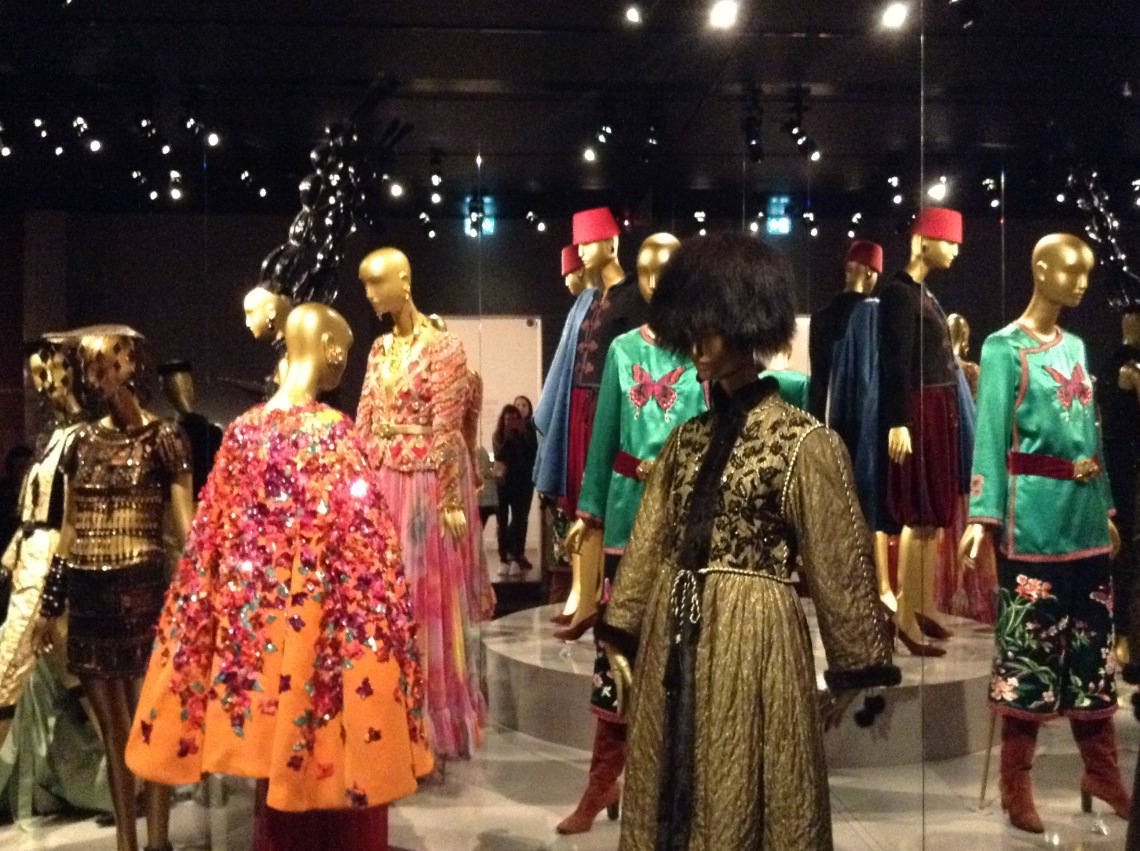

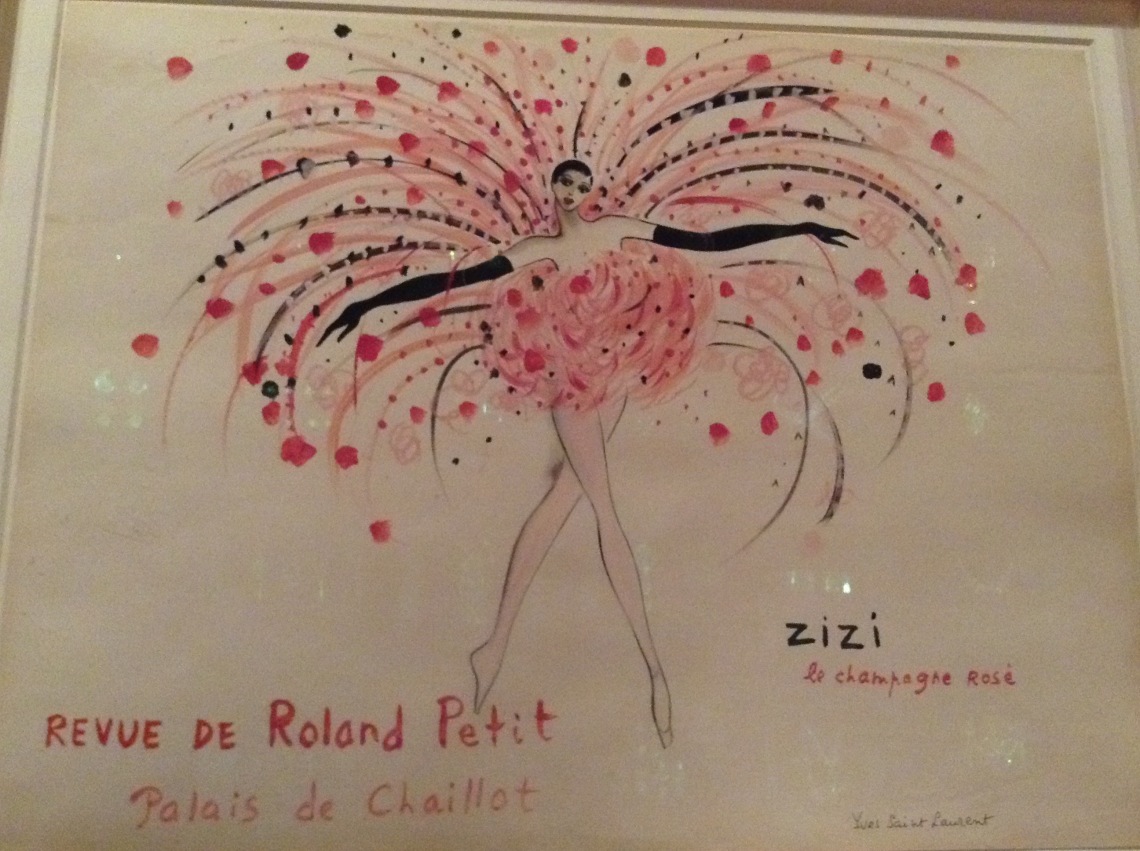



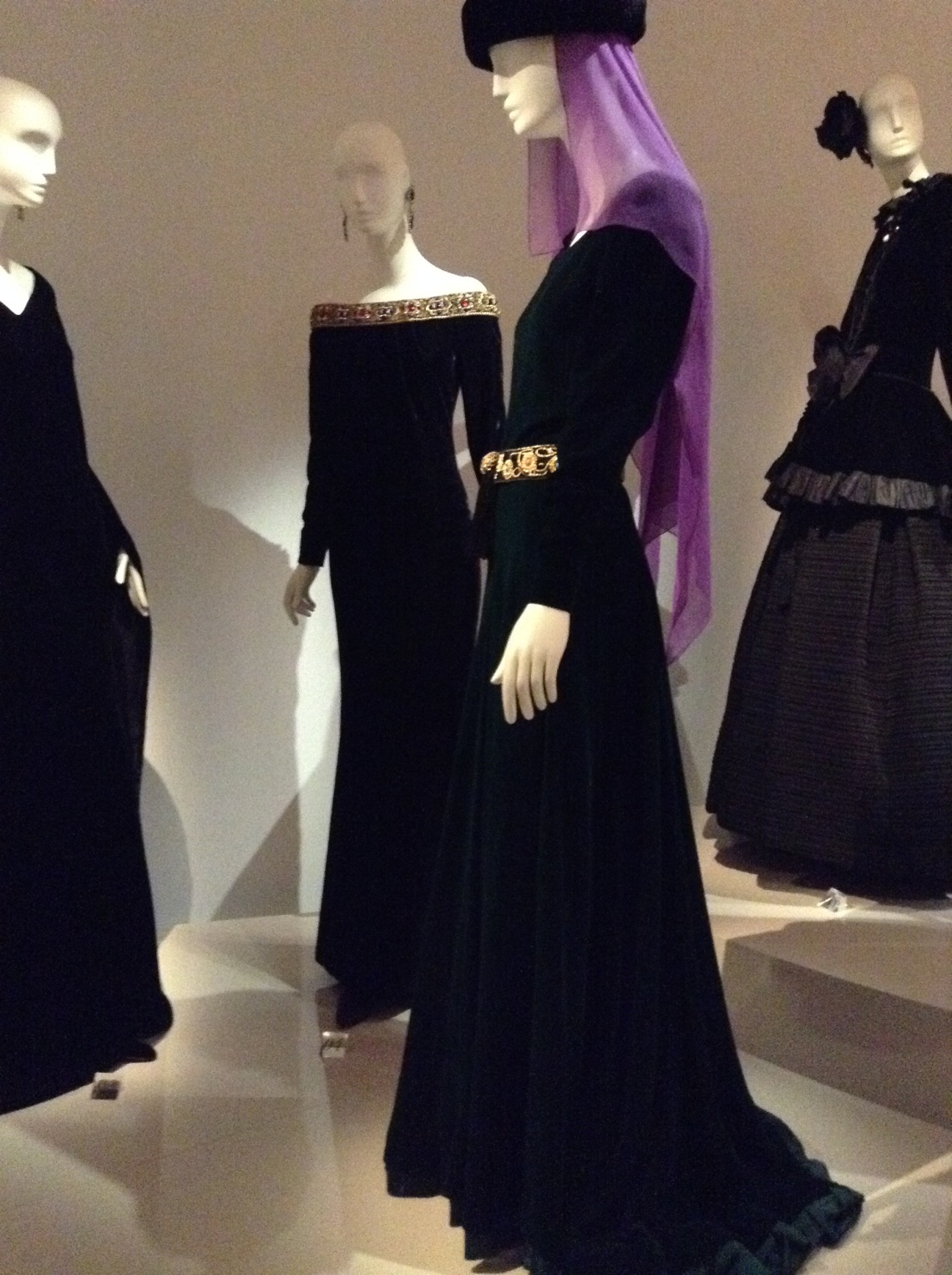
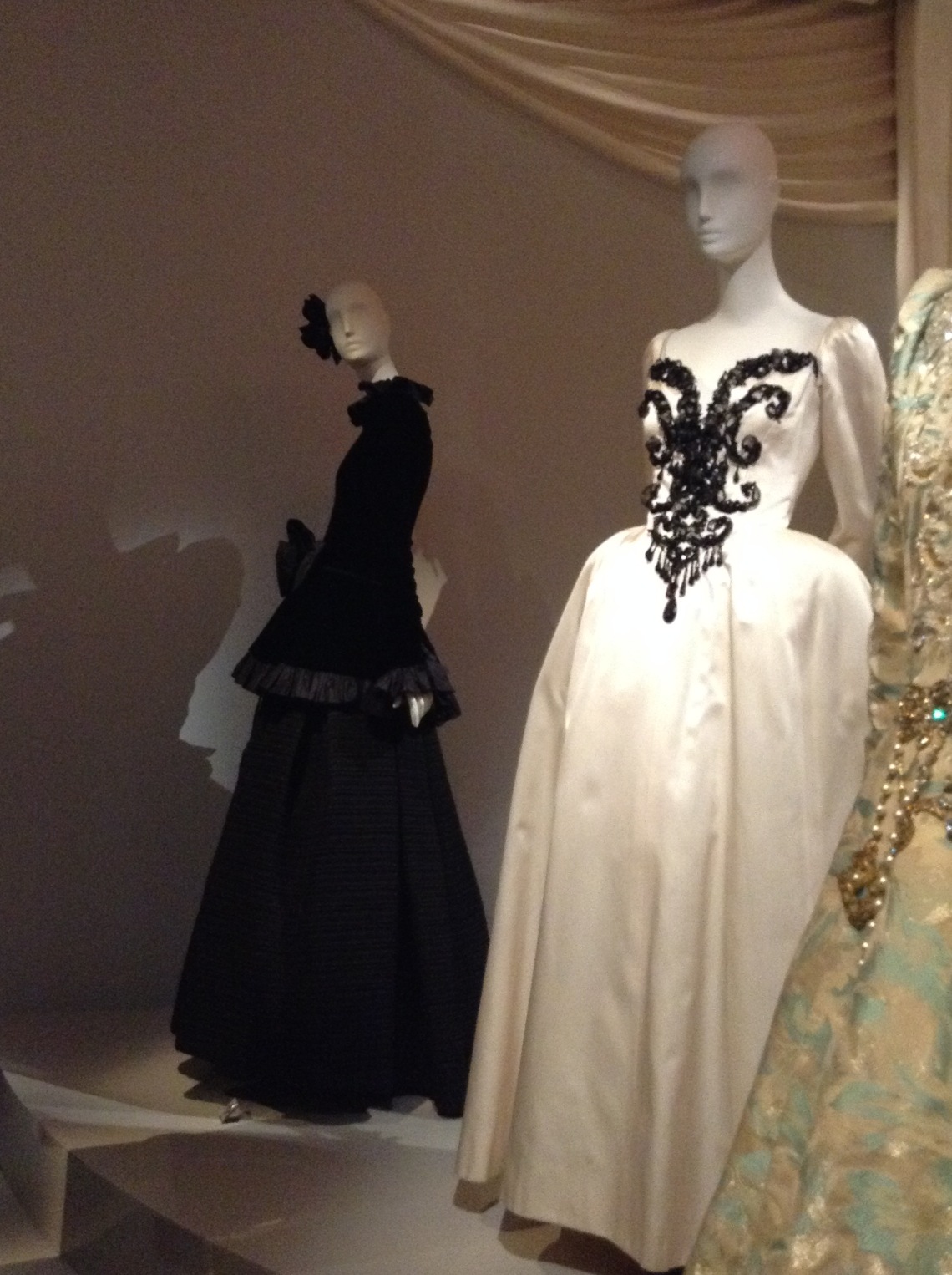








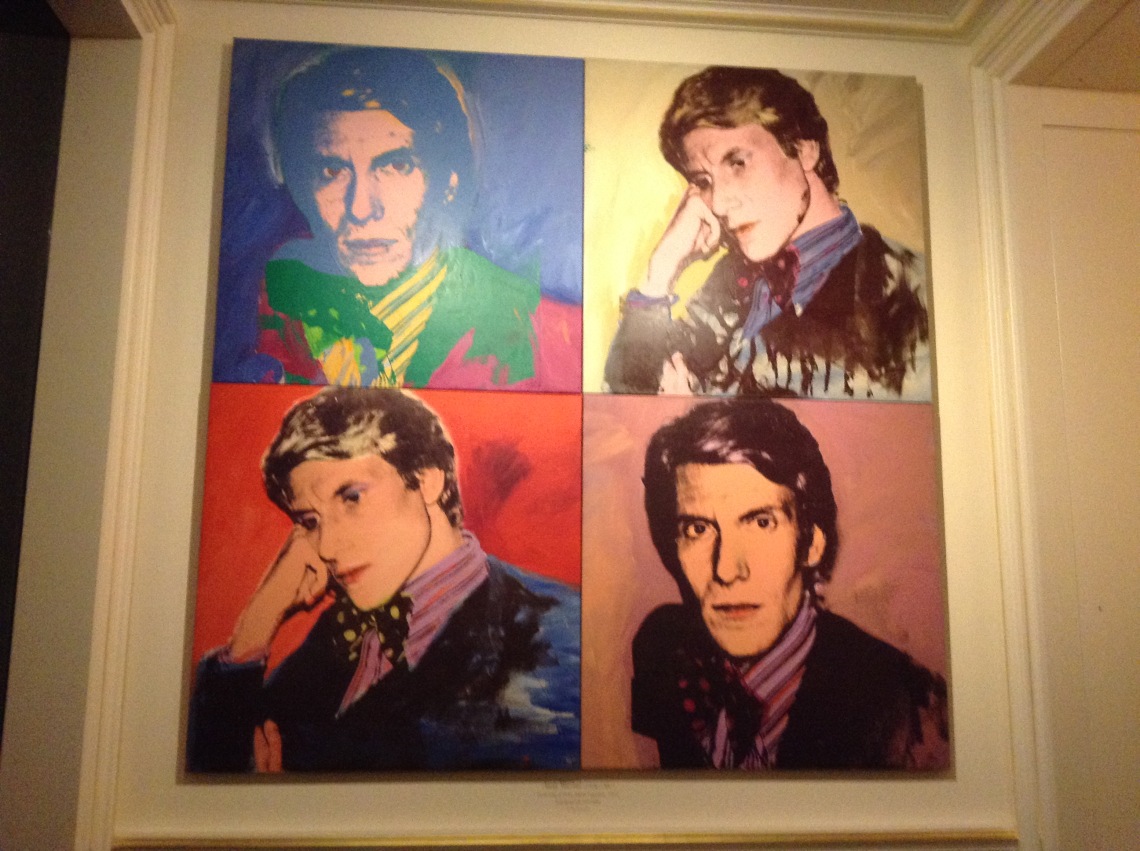
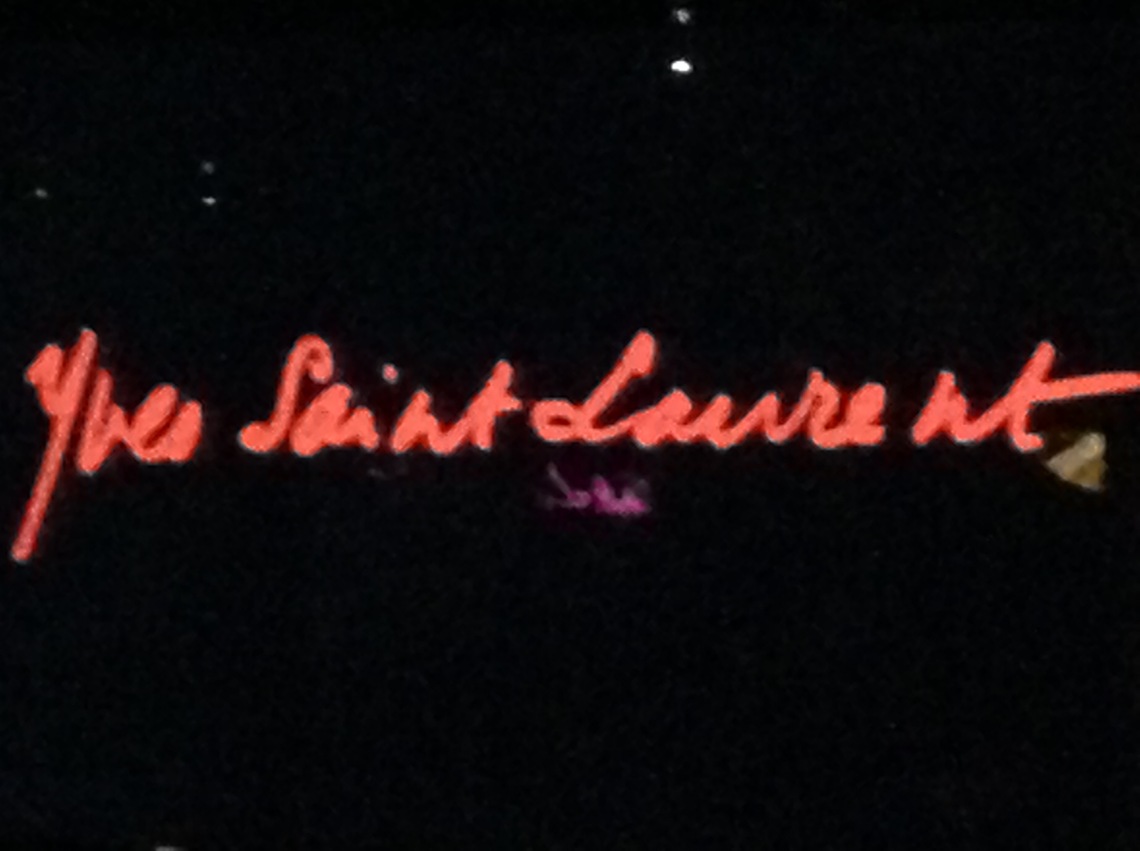
Reblogged this on sketchuniverse and commented:
✏️ HI BEAUTIES! YOU SEE, EVERYTHING IS BORN AND BEGINS FROM SKETCHES. LOT OF THANKS TO CHLOÉ 💐
LikeLiked by 2 people
It’s so interesting to see artistic sketches become wearable art as clothing and adornments which so often defines the accepted tastes and personality of many a culture and time. 😍🤩💕✨
LikeLiked by 1 person
Thank you for your sweet comment ❤
LikeLiked by 1 person